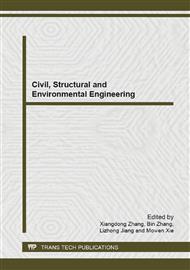[1]
Kang-Li Wu. Developing a metropolitan ecological corridor case study of Taiana river basin region. In the Prodeeding of the Conference of Leisure, Culture, and Green Resource (in Chinese). Taipei: Taiwan University (2003).
Google Scholar
[2]
Wenche E. Dramstad, James D. Olson, Richard T.T. Forman. Landscape Ecology Principles in Landscape Architecture and Land-Use Planning. Washington, DC: Island Press. (1996).
Google Scholar
[3]
I. S. Zonneveld, and Richard T. Forman. Changing Landscape: An Ecological Perspective. New York: Springer-Verlag Press. (1990).
Google Scholar
[4]
E. A. Cook. Landscape structure indices for assessing urban ecological networks , Landscape and Urban Planning, 58. (2002): 269-280.
DOI: 10.1016/s0169-2046(01)00226-2
Google Scholar
[5]
M. Antrop. Landscape change and the urbanization process in Europe. Landscape and Urban Planning, 67(1-4) (2004): 9-26.
DOI: 10.1016/s0169-2046(03)00026-4
Google Scholar
[6]
X. Zhou and Y. C. Wang. Spatial-temporal dynamics of urban green space in response to rapid urbanization and green policies. Landscape and Urban Planning, 100 (2011): 268-277.
DOI: 10.1016/j.landurbplan.2010.12.013
Google Scholar
[7]
K. A. Ulbricht and W. D. Heckendorff. Satellite images for recognition of landscape and land-use changes. ISPRS Journal of Photogrammetry and Remote Sensing, 53(4) (1998): 235-243.
DOI: 10.1016/s0924-2716(98)00006-9
Google Scholar
[8]
Armando A Apan, S. R. Raine and M. S. Paterson. Mapping and Analysis of Changes in the Riparian Landscape Structure of the Lockyer Valley Catchment, Queensland, Australia. Landscape and Urban Planning, 59 (2002): 43-57.
DOI: 10.1016/s0169-2046(01)00246-8
Google Scholar
[9]
Severine Vuilleumier and R. Prelaz-Droux. Maping of Ecological Networks for Landscape Planning. Landscape and Urban Planning, 58 (2002): 157-170.
DOI: 10.1016/s0169-2046(01)00218-3
Google Scholar
[10]
Kang-Li Wu. Application of RS and GIS in ecological corridor planning and realated land use management. Technical Report of Arricultural Council(in Chinese). Taiwan (2004).
Google Scholar
[11]
Mikel Gurrutxaga, Pedro J. Lozano, Gabriel del Barrio. GIS-based approach for incorporating the connectivity of ecological networks into regional planning. Journal for Nature Conservation 18 (2010): 318–326.
DOI: 10.1016/j.jnc.2010.01.005
Google Scholar


